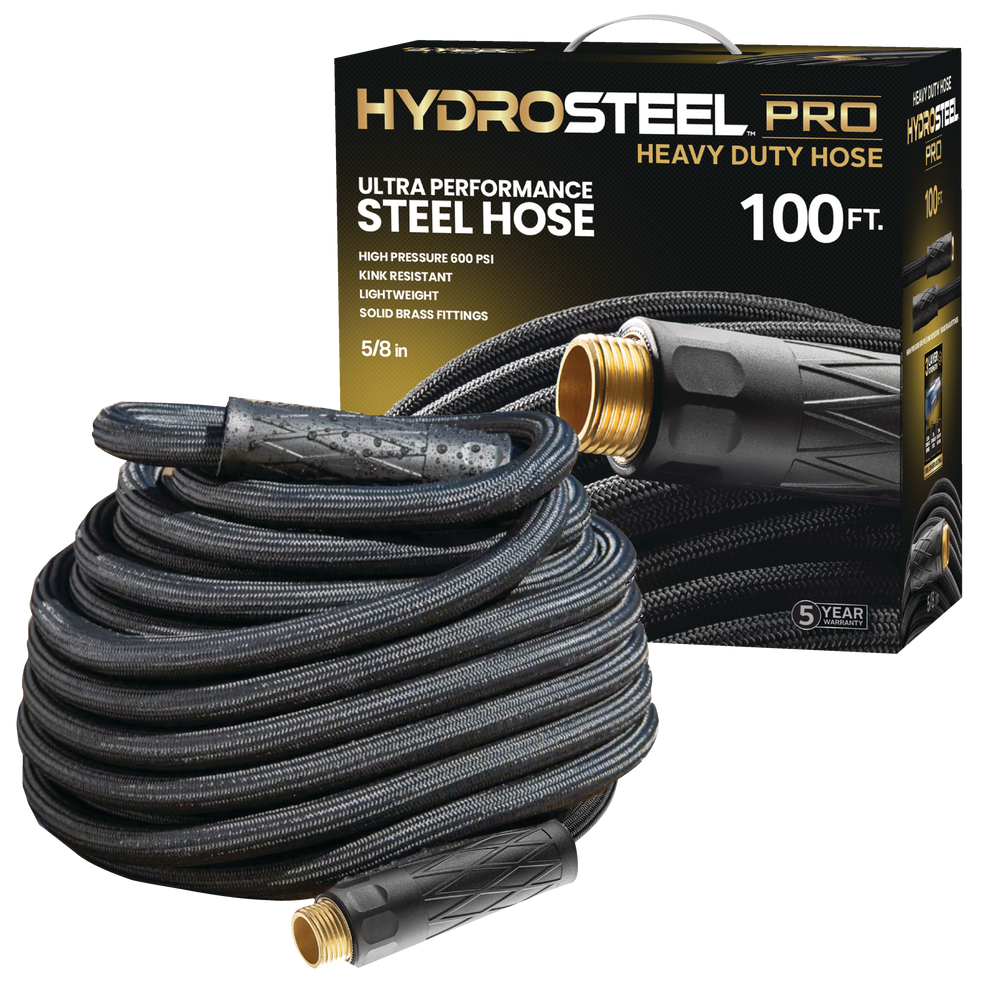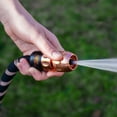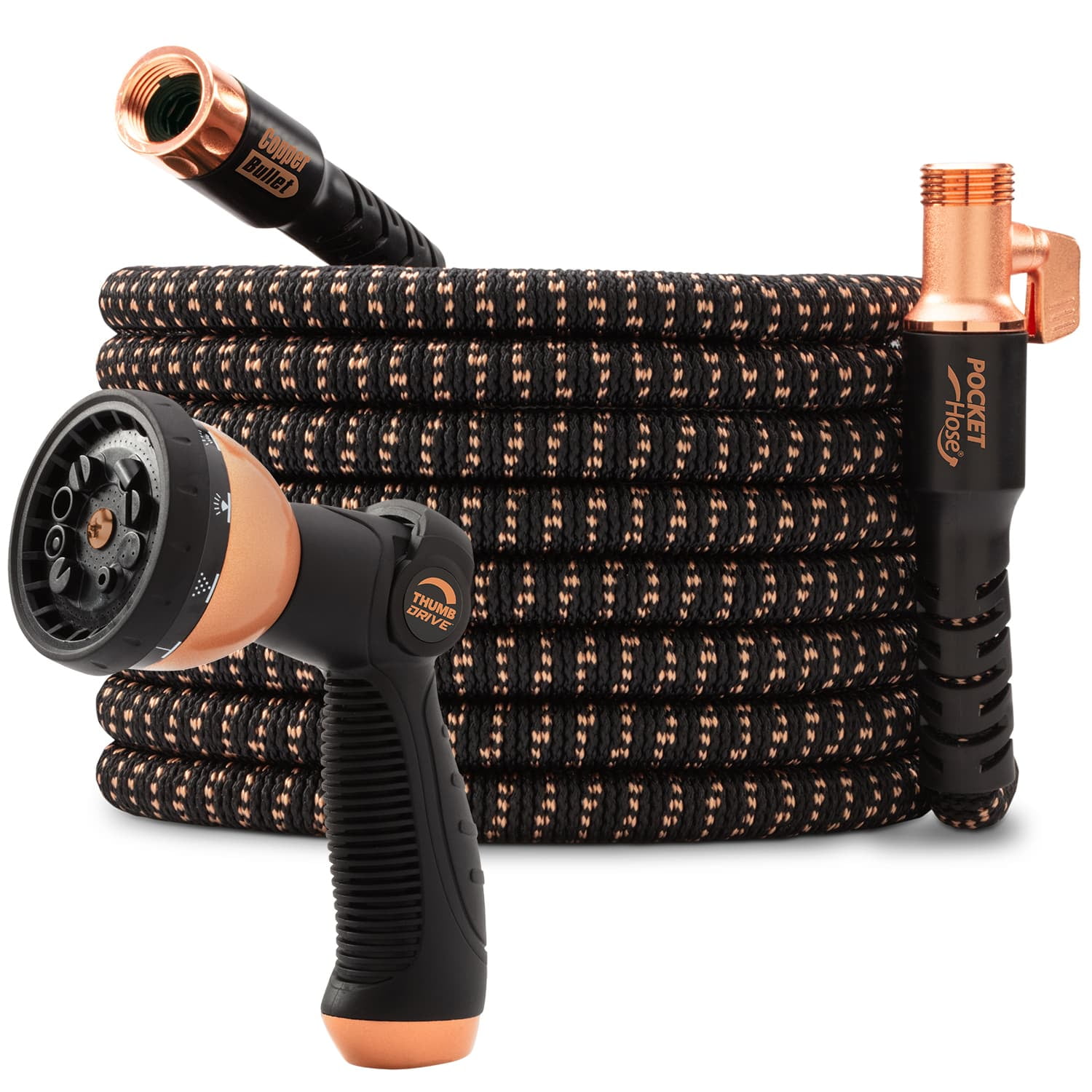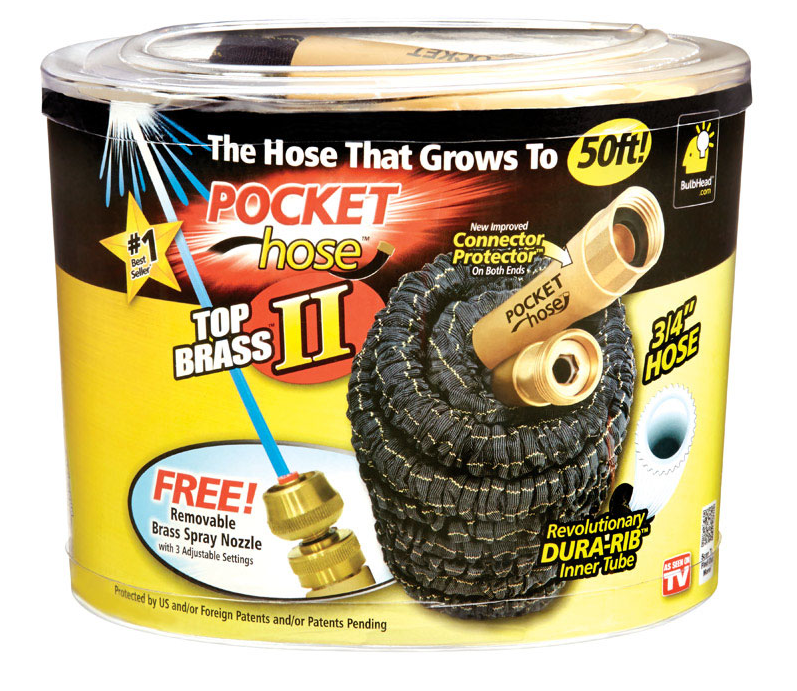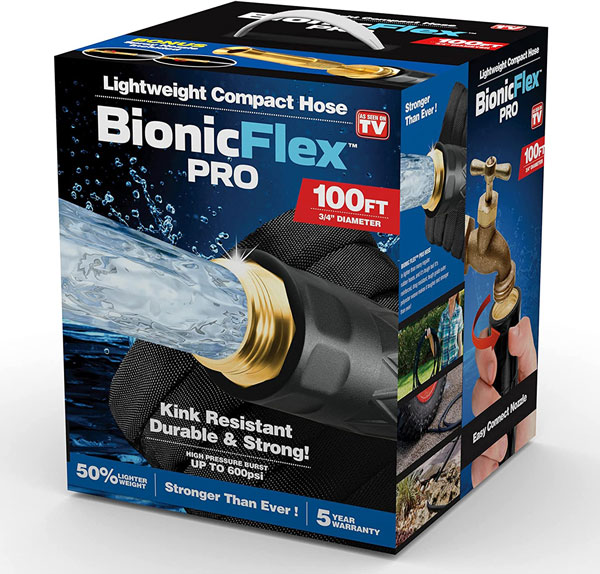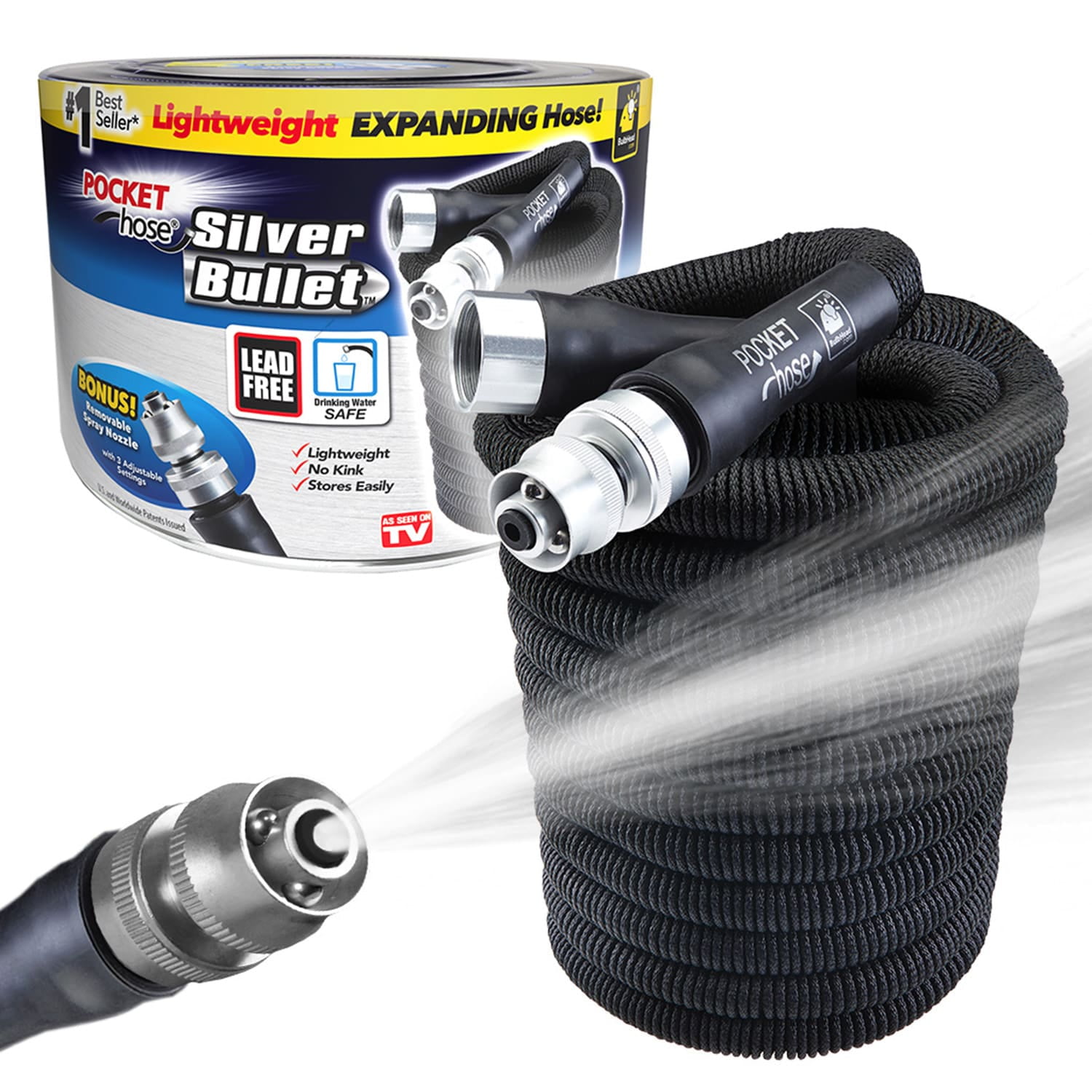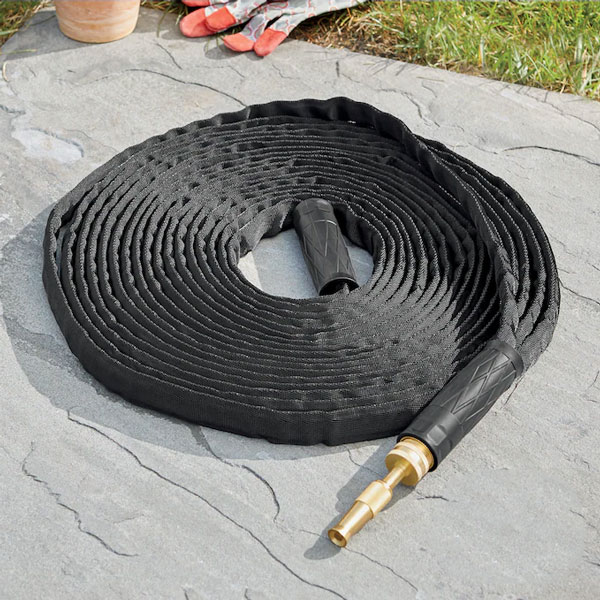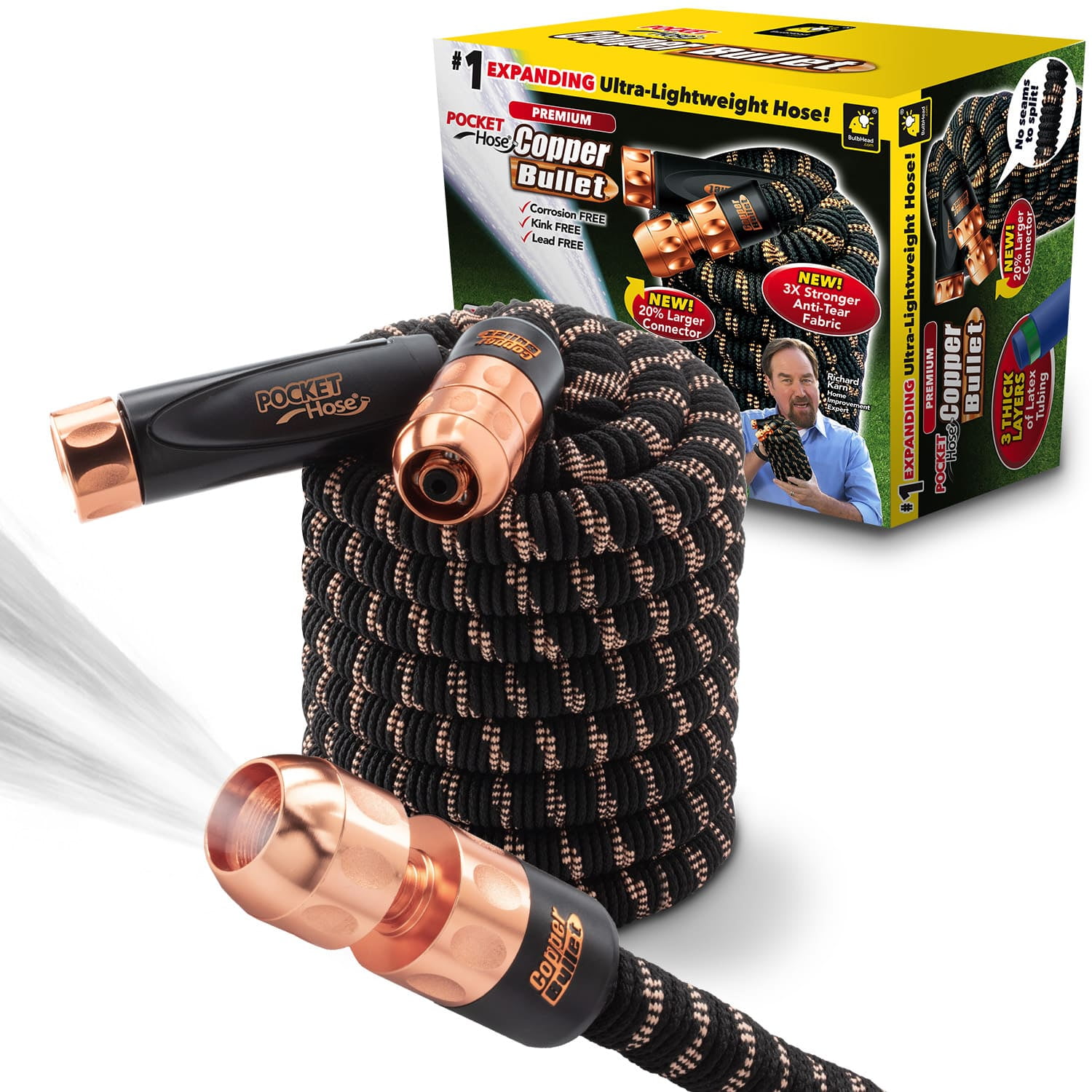As Seen On Tv Garden Hose 100 Ft

The allure of effortless gardening, often promised by late-night infomercials, has once again brought a seemingly revolutionary product into the spotlight: the "As Seen On TV" 100 ft garden hose. Boasting lightweight construction, expandable design, and tangle-free operation, these hoses have captivated homeowners seeking a hassle-free watering experience. However, beneath the glossy veneer of convenience lies a complex reality, one that demands a closer examination of durability, performance, and ultimately, consumer satisfaction.
At the heart of this discourse is the question of whether these expandable hoses, particularly the 100 ft variant, truly deliver on their advertised promises. The "As Seen On TV" label carries both a legacy of innovative solutions and a history of products falling short of expectations. This article aims to delve into the experiences of users, scrutinize expert opinions, and analyze independent tests to provide a balanced perspective on the 100 ft expandable garden hose phenomenon, exploring its benefits, drawbacks, and overall value proposition.
The Promise of Convenience
The primary appeal of the "As Seen On TV" 100 ft garden hose lies in its touted convenience. These hoses, typically constructed with an inner latex or thermoplastic elastomer (TPE) tube and an outer woven fabric covering, are designed to expand significantly when water pressure is applied. This expandable nature allows for easy storage and maneuverability when not in use, a stark contrast to traditional rubber hoses.
The lightweight design further contributes to the user-friendly experience. Consumers, especially those with limited mobility or storage space, are drawn to the promise of a powerful, full-length hose that weighs significantly less than its conventional counterpart.
Durability Concerns and User Experiences
Despite the allure of convenience, the Achilles' heel of many expandable hoses, including the 100 ft "As Seen On TV" versions, is their questionable durability. Numerous consumer reviews and independent tests highlight issues such as bursting, leaking, and premature failure.
The thin inner tube, while allowing for expansion, is often vulnerable to punctures from sharp objects or damage from excessive water pressure. The outer fabric covering, while providing some protection, is not always sufficient to withstand the rigors of regular use. Many users have reported the hose failing within a few months of purchase, a stark contrast to the years of service expected from traditional rubber hoses.
"I bought the 100 ft hose hoping it would make watering my garden easier, but it burst after only a few weeks," lamented Sarah Miller, a homeowner in Ohio. "The outer fabric frayed, and the inner tube just gave way. It was a complete waste of money."
Independent tests conducted by consumer advocacy groups have corroborated these anecdotal reports. These tests often involve subjecting the hoses to various stress tests, including pressure testing, abrasion resistance, and UV exposure. The results frequently reveal that the expandable hoses fall short of the durability standards set by traditional rubber hoses.
Expert Opinions and Alternative Solutions
Gardening experts and industry professionals offer a nuanced perspective on the "As Seen On TV" 100 ft garden hose. While acknowledging the convenience factor, they often caution against relying on these hoses as a long-term solution, particularly for heavy-duty use.
John Smith, a professional landscaper with over 20 years of experience, advises caution. "Expandable hoses can be useful for light watering tasks, but they are not designed for the demands of a professional landscaping job. Traditional rubber hoses are still the gold standard for durability and reliability."
Alternatives to expandable hoses include reinforced rubber hoses, which offer a balance of durability and flexibility, and coiled hoses, which provide compact storage and tangle-free operation, albeit with a shorter length. The choice ultimately depends on the individual's needs and priorities.
The Price of Convenience: Value for Money?
The cost of the "As Seen On TV" 100 ft garden hose varies depending on the brand, retailer, and any bundled accessories. While typically priced lower than high-end rubber hoses, the questionable durability raises concerns about the overall value proposition.
If a hose fails within a short period, the cost per use can quickly surpass that of a more expensive, but longer-lasting, alternative. Consumers should carefully weigh the initial cost against the potential for premature failure and replacement.
Future Trends and Potential Improvements
Despite the current limitations, the expandable hose market continues to evolve. Manufacturers are exploring new materials and designs aimed at improving durability and performance. Some newer models feature reinforced inner tubes, more robust outer coverings, and improved fittings designed to withstand higher water pressure.
Nanotechnology and advanced polymer science could potentially yield even more durable and resilient expandable hoses in the future. However, until significant advancements are made, consumers should exercise caution and carefully research their options before investing in an "As Seen On TV" 100 ft garden hose.
Moving forward, increased transparency and standardized testing are crucial for ensuring that consumers can make informed decisions. Clearer labeling regarding pressure limitations, intended use cases, and warranty information would help manage expectations and prevent disappointment.
Ultimately, the "As Seen On TV" 100 ft garden hose represents a trade-off between convenience and durability. While the promise of lightweight, tangle-free watering is undeniably appealing, consumers must be aware of the potential for premature failure and carefully consider their individual needs before making a purchase. Only then can they determine whether the allure of convenience outweighs the long-term value of a more traditional, and potentially more reliable, alternative.
